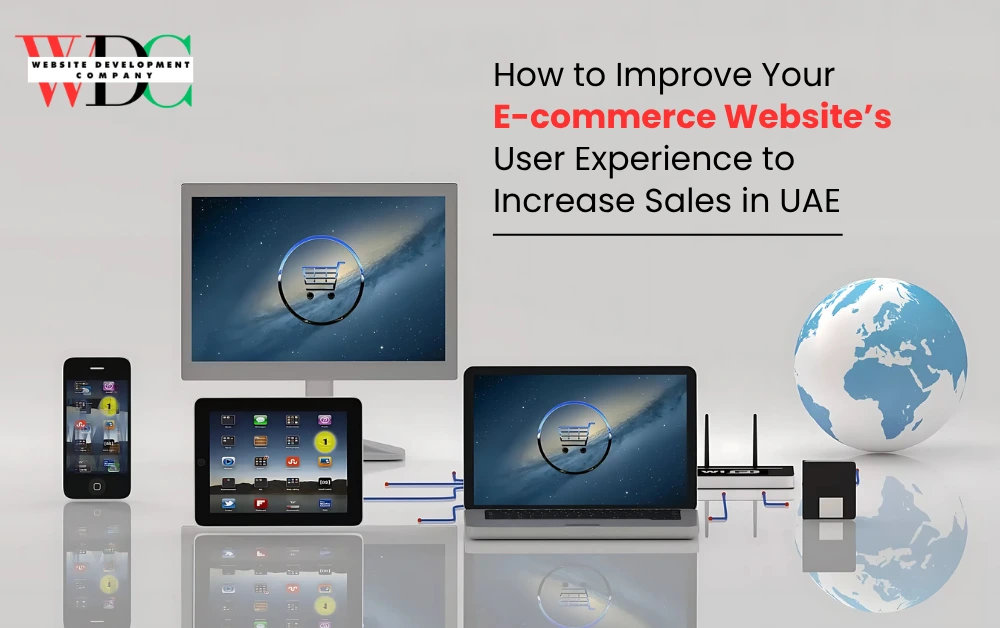Online shoppers in the UAE have high expectations—lightning-fast websites, sleek interfaces, and seamless checkouts. With more clients turning to digital platforms to make purchases, delivering a powerful user experience (UX) has become the secret ingredient for e-commerce success. A well-optimized site doesn’t just attract visitors; it converts them into loyal, paying customers.
Whether you’re a startup or an established brand, your website’s functionality can make or break your sales. If you’re investing in e-commerce website development Dubai, it’s vital to prioritize user experience from the start.
Let’s explore how to improve your e-commerce website’s UX to increase sales and build long-term customer loyalty in the competitive UAE market.
1. Optimize for Mobile Users First
Over 70% of UAE shoppers browse and shop using their smartphones. If your e-commerce website isn’t mobile-friendly, you’re leaving money on the table.
What You Should Do:
- Use a responsive design that adjusts smoothly to all screen sizes.
- Ensure all buttons and menus are easily clickable with thumbs.
- Avoid horizontal scrolling and oversized images that slow down loading.
- Test the mobile shopping experience regularly using various devices.
A mobile-first design not only improves UX but also supports better search rankings and faster loading speeds.
Also read:- How to Find Affordable E-Commerce Web Design Services Without Compromising Quality
2. Simplify the Navigation
Shoppers shouldn’t have to “figure out” how to browse your website. A confusing menu structure or too many clicks can increase bounce rates and cart abandonment.
Tips to Simplify Navigation:
- Use a straightforward main menu with key product categories.
- Add breadcrumbs to help users track their path.
- Keep the header consistent on all pages.
- Use filters and sort features for easy product discovery.
Smooth navigation keeps visitors engaged and encourages deeper browsing, which increases the chances of purchase.
3. Speed Up Your Website Loading Time
In a fast-paced region like the UAE, even a 2-second delay in page load can significantly hurt conversions. Website speed is a significant part of the user experience.
How to Improve Speed:
- Compress images and use next-gen formats like WebP.
- Use caching & a Content Delivery Network (CDN) for quicker load times.
- Eliminate unnecessary plugins and scripts.
- Pick a hosting provider with data centers close to the GCC region.
The quicker your site loads, the smoother the shopping experience—leading to higher satisfaction and lower bounce rates.
4. Use High-Quality Product Images and Videos
Visuals play a key part in online shopping. Poor image quality or lack of detail leaves users unsure and leads to abandoned carts.
Best Practices:
- Upload multiple high-resolution images for each product.
- Include Zoom features and show products from different angles.
- Add short product videos showing real usage, especially for electronics, clothing, or beauty products.
- Optimize images to load quickly without compromising quality.
Better product presentation gives users the confidence to click “Buy Now.”
5. Create a Frictionless Checkout Process
The checkout page is where many sales are lost. Hidden charges, long forms, and required logins can quickly drive customers away.
Streamline Your Checkout:
- Offer guest checkout without requiring sign-up.
- Minimize form fields—ask only for essential information.
- Show a clear order summary with pricing breakdown.
- Provide multiple payment methods (credit cards, Apple Pay, Tabby, etc.).
- Allow users to easily apply coupon codes.
A fast, transparent checkout builds trust and reduces cart abandonment.
6. Display Trust Signals Clearly
Customers won’t buy unless they feel secure. Trust signals reassure users that your website is legitimate and their data is safe.
Add These Trust Elements:
- SSL certificates (HTTPS secured site)
- Secure payment icons (Visa, Mastercard, PayPal)
- Reviews and star ratings on product pages
- Return/refund policy and delivery timelines
- Precise contact details, including UAE-based phone or WhatsApp support
Trust boosts confidence—especially for first-time visitors deciding whether to make a purchase.
Also Read:- 8 Crucial Website Security Tips to Protect Your Business Online in Dubai
7. Use Personalized Experiences and Smart Recommendations
Today’s consumers expect personalization. Showing relevant products or offers increases engagement and encourages impulse purchases.
Personalization Tactics:
- Use cookies to remember user preferences and carts.
- Show related or frequently bought together products.
- Offer location-based deals or delivery options.
- Recommend products based on browsing history or past purchases.
Innovative suggestions reduce decision fatigue and help users discover more—leading to higher average order value.
8. Enable Fast and Reliable Search Functionality
Shoppers often know precisely what they’re looking for. A poor search function can frustrate users and send them elsewhere.
Search Features to Include:
- Auto-suggestions and predictive search terms
- Spelling correction for typos
- Filters based on price, size, color, brand, etc.
- Display product images in search results
A powerful internal search helps users find what they need instantly—creating a smoother buying journey.
9. Add Live Chat or WhatsApp Support
UAE shoppers value personalized support. Adding real-time customer service options like live chat or WhatsApp integration improves the overall shopping experience.
Why It Works:
- Answers buyer questions quickly
- Reduces hesitation at checkout
- Builds relationships with first-time visitors
- Works well on mobile and desktop
Real-time help often tips a hesitant user into becoming a paying customer.
10. Monitor, Test, and Improve Regularly
UX isn’t a one-time fix. User behavior changes, technology evolves, and so should your website.
Continuous Improvement Tips:
- Use Google Analytics to track bounce rates & user flows.
- Monitor heatmaps (via Hotjar or Microsoft Clarity) to see where users click and drop off.
- Run A/B tests to find what designs, CTAs, or layouts convert better.
- Regularly collect user feedback and reviews.
Constant optimization keeps your e-commerce website store ahead of competitors and aligned with customer expectations.
Final Thoughts
User experience is no longer just a “nice-to-have”—it’s the core of any successful e-commerce website. In the UAE’s fast-moving digital market, shoppers demand speed, clarity, security, and convenience. By improving UX across all touchpoints—from homepage to checkout—you not only increase sales but also earn customer trust and loyalty.
Focus on creating a site that’s intuitive, mobile-friendly, and personalized. It’s not about having the fanciest design—it’s about creating a shopping journey that feels effortless.
Frequently Asked Questions
How do I know if users are having a poor experience?
High bounce rates, abandoned carts, and short session durations often indicate UX issues that need to be fixed.
How important is page layout in e-commerce website UX?
Very important. Clean layouts with clear sections help users scan and make decisions without confusion.
How often should I update my product pages?
Update as often as stock, prices, or offers change. Fresh content keeps users engaged and helps SEO.
Do I need a search bar on my website?
Yes. A search bar helps customers quickly find what they’re looking for without browsing every page.
Why is it important to keep my website design simple?
Simple design makes it simpler for customers to shop, click, and buy without feeling lost.






